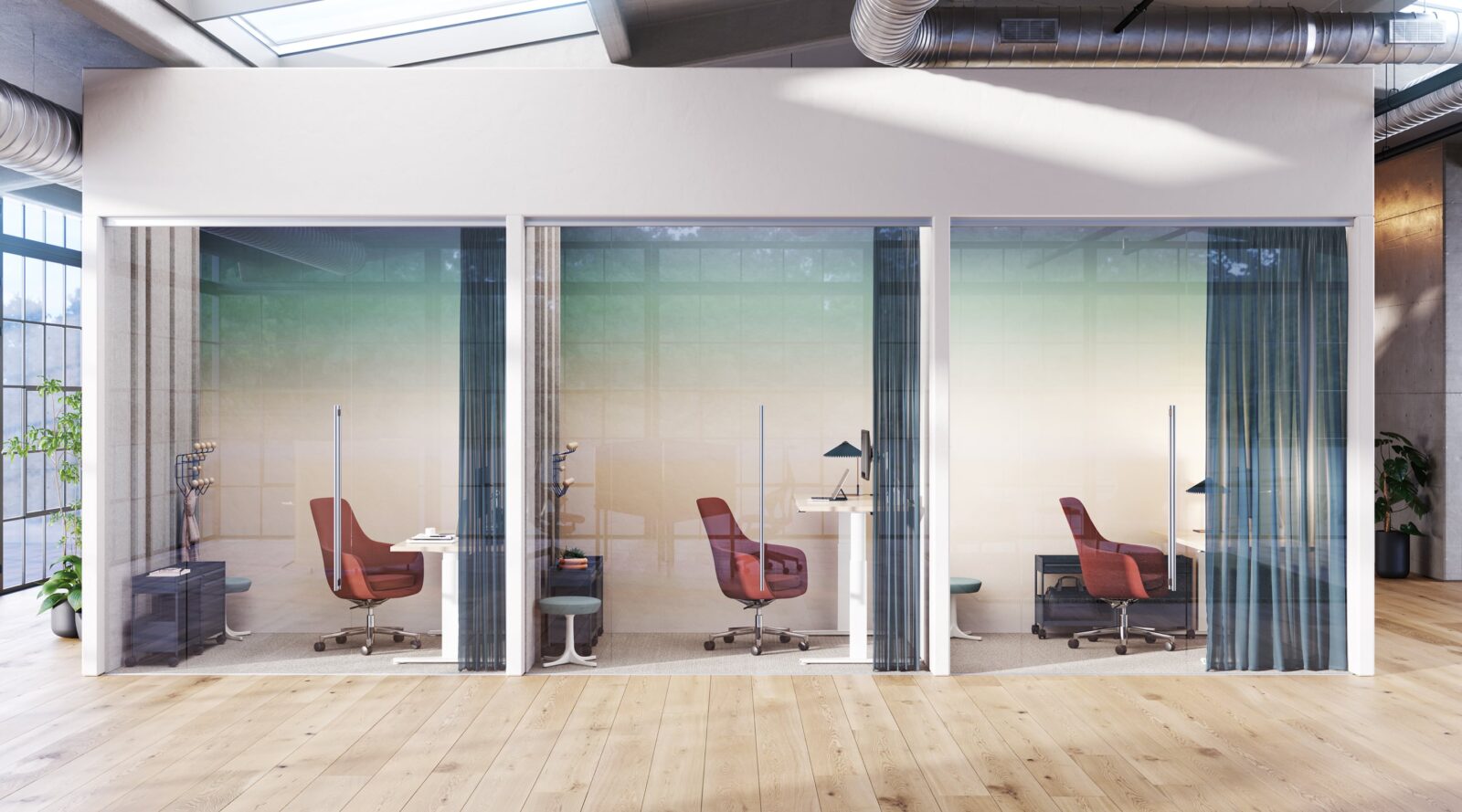It could become difficult to find time for in-depth, concentrated work in the fast-paced, continuously connected world of today. Open office designs make it challenging to focus on cognitively demanding work and enter a state of flow due to the numerous interruptions and diversions they present.
Focus rooms are useful in this situation. As the name implies, these quiet areas are created especially to promote concentrated work and optimal efficiency by reducing outside distractions and sensory inputs.
Whether in a home office, coworking space, or corporate office, there are a few essential guidelines that a skilled office interior designer would follow when designing your personal focus region.
Sound Absorption Insulation
Any environment that wants to be free of distractions needs to reduce noise. Acoustic insulation and soundproofing elements such as solid-core doors, double-drywall construction, acoustic panels, carpets, and more will be included by an office interior designer. A person’s concentration might be disrupted by even slight background noise.
Color Scheme and Lighting
Lighting has a significant impact on our capacity for concentration. In order to provide gentle, diffused illumination, an office interior designer will carefully evaluate both artificial and natural lighting sources. Warm color temperatures and dimmable fixtures that let users adjust the lighting levels are probably what they’ll suggest.
Office interior designers typically use muted color schemes that are easier on the eyes and less stimulating than bright, flamboyant ones, such as blues, greens, and grays. Useful splashes of richer accent colors are available.
Minimal Furnishings and Décor
From a visual perspective, less is more in a focus room. To avoid creating visual “noise” and diverting attention from the duties at hand, an office interior designer will remove any extraneous ornamental features.
Simple, ergonomic furnishings will be used, such as a large desk or table with few drawers or cupboards and a cozy, adjustable chair. Having built-in shelves for necessary tools can assist in maintaining clear surfaces.
If there is any plant life, it will be minimal to prevent the need for extra stimulation.
Environmental Regulations
A productive focus room must have the capacity to precisely adjust the temperature, ventilation, and other environmental elements. Individual climate controls, windows that can be opened to let in fresh air, and even white noise generators to block out distracting noises are all highlighted by office interior designers.
Technology Consolidation
The goal of a focus room is to reduce digital distractions, but when audio/visual requirements come up, smooth technological integration is still helpful. Even if the goal of a focus room is to reduce digital distractions, smooth technology integration is still beneficial for situations requiring audio or video. The right audio/visual equipment, such as speakers, desk lighting that can be adjusted, charging stations, and monitors, will be planned for by an office interior designer.
Privacy and Access
A sense of psychological privacy is critical for deep work. An Office Interior Designer will emphasize access control, like key card entries or biometrics, to allow focus room users to avoid unexpected intrusions.
Privacy film on interior windows and doors can block exterior visual distractions. Some spaces may even call for a small, attached vestibule room to serve as an airlock of sorts.
Multi-Purpose Flexibility
While deep work is the primary use case, some Office Interior Designers build flexibility into their focus rooms. They may integrate features like moveable walls or sound-absorbing ceiling baffles to toggle between an open, collaborative environment, and an enclosed, silent space for individual focus.
By applying these key principles, an experienced Office Interior Designer can craft focus rooms that are true productivity havens—minimalist spaces optimized for shutting out the world’s incessant demands and making time for what’s most important.
Focus rooms represent the modern office’s answer to the age-old quest for a quiet, contemplative space to simply think. From corporate campuses to home offices, they enable knowledge workers to work deeply when needed, emerging refreshed and ready to put their best ideas into action.



Leave a Reply